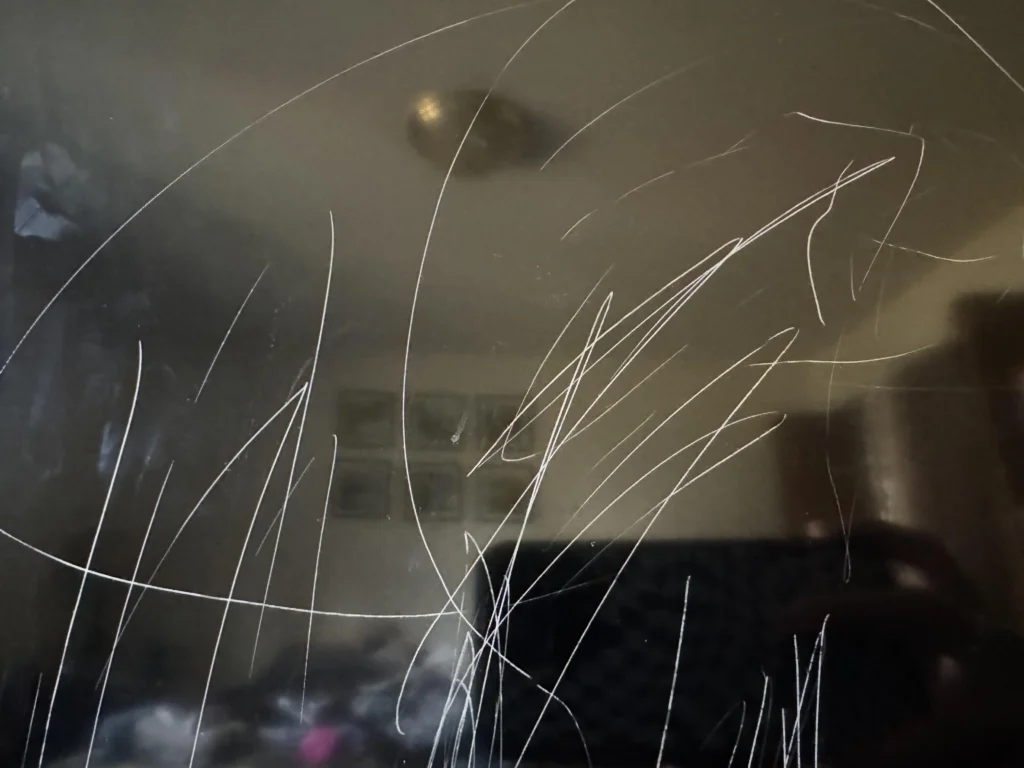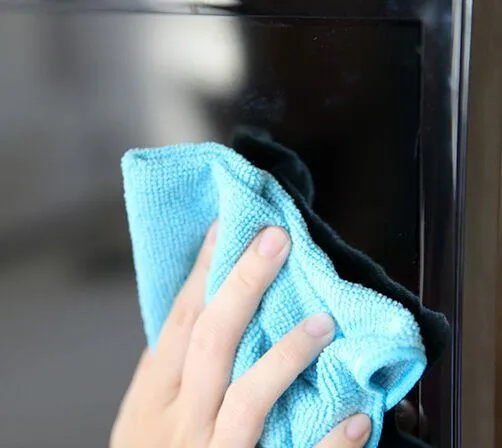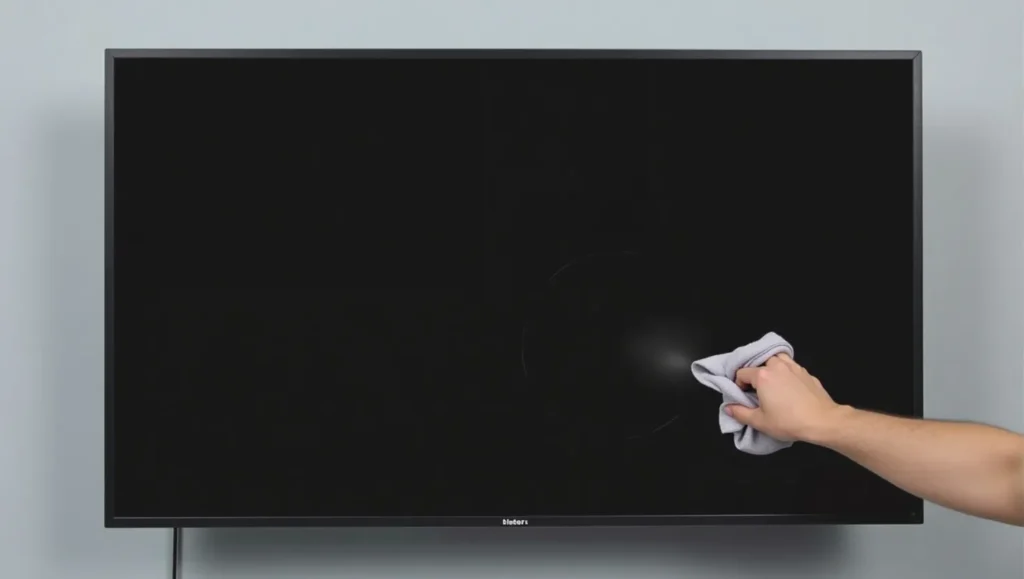A scratch on your TV screen can be frustrating. It distracts from your favorite shows or games. Whether you have an LCD, LED, or OLED TV, there are ways to reduce the appearance of minor scratches. However, not all methods work, and some can cause more harm. This guide covers safe techniques, warns against risky ones, and offers tips to prevent future scratches. Always proceed with caution, especially with delicate screens like OLED.
Assess the Scratch First
Before trying any fix, check the scratch’s severity. Is it a light surface mark or a deep gouge? Surface scratches may respond to DIY methods. Deep scratches often need professional repair or screen replacement. Turn off your TV to see the scratch clearly. If it’s only visible when the screen is off, you might choose to ignore it.
How to Assess
- Turn off the TV: Scratches are easier to see on a dark screen.
- Feel the scratch: Run your finger gently over it. If you feel a groove, it’s likely deep.
- Check visibility: If the scratch doesn’t affect picture quality when the TV is on, it may not need fixing.

Clean the Screen Properly
Cleaning your TV screen is the first step before any repair. Dust or debris can cause more scratches if not removed. Flat-screen TVs are fragile and need gentle cleaning.
Cleaning Steps
- Turn off and unplug the TV: This ensures safety and better visibility.
- Use a microfiber cloth: Avoid paper towels or rough cloths, which can scratch the screen.
- Wipe gently: Use a dry microfiber cloth to remove dust. For smudges, dampen the cloth with a mix of equal parts distilled water and white vinegar.
- Avoid harsh chemicals: Do not use alcohol, ammonia, acetone, or benzene, as they can damage screen coatings, especially on OLED TVs.

Safe Methods to Reduce Scratches
Several methods can help reduce the appearance of minor scratches. Always test on a small area first and stop if the scratch worsens. Below are the most reliable methods.
Using a Professional Scratch Repair Kit
Scratch repair kits, like Displex Display Polish or Novus Plastic Polish, are designed for electronics. They work best on surface scratches on LCD or LED screens.
Steps
- Buy a kit from a trusted retailer like Amazon or Best Buy.
- Power off and unplug your TV.
- Spray the solution onto the scratch as per the kit’s instructions.
- Buff gently with a microfiber cloth in circular motions until dry.
- Check if the scratch is less visible.
Pros and Cons
| Pros | Cons |
|---|---|
| Designed for electronics | May not work on deep scratches |
| Safe for most screens | Requires purchase |
| Easy to use | Results vary by screen type |
Using a Magic Eraser
Magic erasers can remove light scratches by gently abrading the surface. Use with caution to avoid damaging coatings.
Steps
- Turn off and unplug the TV.
- Dampen a magic eraser slightly with water.
- Rub the scratch gently for 30–60 seconds in one direction, then switch directions.
- Wipe the area with a dry microfiber cloth.
- Check the scratch and stop if it worsens.
Pros and Cons
| Pros | Cons |
|---|---|
| Effective for light scratches | Can damage delicate screens like OLED |
| Affordable and accessible | Requires careful application |
Using an Auto Rubbing Compound
A mild auto rubbing compound, like 3M, can fade scratches on plastic screens.
Steps
- Clean the screen with a microfiber cloth.
- Apply a small amount of compound to a soft cloth.
- Rub the scratch gently in circular motions.
- Clean the area with a water-vinegar mix.
- Finish with a dry microfiber cloth.
Pros and Cons
| Pros | Cons |
|---|---|
| Works on plastic screens | Not suitable for glass or OLED screens |
| Can add shine | Risk of over-abrasion |

Using a Soft Eraser
A soft pencil eraser can gently buff out minor scratches.
Steps
- Clean the screen thoroughly.
- Rub the scratch gently with a clean eraser in circular motions.
- Wipe away residue with a microfiber cloth.
- Check the scratch and stop if no improvement.
Pros and Cons
| Pros | Cons |
|---|---|
| Simple and cheap | Limited to very light scratches |
| Minimal risk if done gently | May not work on all screens |
Methods to Avoid
Some popular remedies can damage your TV screen, especially delicate ones like OLED. Avoid these methods.
- Toothpaste: Non-gel toothpaste is abrasive and can strip anti-glare coatings or add micro-scratches. A Sony Community user reported it made scratches more noticeable.
- Petroleum Jelly: It may temporarily mask scratches by filling them, but it attracts dust and can damage coatings, as discussed on Reddit. It’s especially risky for OLED screens.
- Baking Soda, Banana Peels, or Powdered Cleansers: These leave residue or cause more scratches, making the screen worse.
Special Considerations for OLED Screens
OLED screens are more delicate than LCD or LED screens. DIY methods like petroleum jelly or toothpaste can damage their coatings. For minor scratches, it’s often best to live with them if they don’t affect viewing. For deeper scratches, contact the manufacturer or a professional repair service. LG’s support page advises against using abrasives or chemicals on OLED screens.
When to Seek Professional Help
If the scratch is deep or affects picture quality, professional repair is the safest option. Deep scratches may require screen replacement, which can be expensive. Contact your TV’s manufacturer or a local repair service for a quote. For example, LG offers support for their OLED TVs, which may include repair options.
If your TV has other issues, like a black screen, check our guide on Fixing Element TV Black Screen.
Preventing Future Scratches
Preventing scratches is easier than fixing them. Follow these tips:
- Use a screen protector: If available for your TV model, a protector can prevent scratches.
- Keep sharp objects away: Avoid toys, keys, or metal objects near the TV.
- Clean regularly: Use a microfiber cloth to remove dust that could cause scratches.
- Secure during transport: Wrap the TV in soft materials when moving it.
Learn more about TV maintenance in our guide on How to Fix a Dark TV Screen.
FAQ
Can I use toothpaste to remove scratches from my TV screen?
No, toothpaste can damage the screen’s coating and add micro-scratches. It’s not recommended.
Is petroleum jelly safe for OLED TV screens?
Petroleum jelly may temporarily hide scratches but can harm OLED screens and attract dust. Avoid it.
What’s the best way to fix a scratched TV screen?
A professional scratch repair kit, like Displex, is the safest and most effective for minor scratches.
Can deep scratches be fixed at home?
Deep scratches usually require professional repair or screen replacement, as DIY methods are less effective.
How can I prevent scratches on my TV screen?
Use a microfiber cloth for cleaning, keep sharp objects away, and consider a screen protector.
Conclusion
Scratches on your TV screen don’t have to ruin your viewing experience. For minor scratches, try a professional repair kit or a magic eraser with caution. Avoid risky methods like toothpaste or petroleum jelly, especially on OLED screens. If the scratch is deep, consider professional repair. Regular maintenance and preventive measures can keep your screen scratch-free. For more TV troubleshooting tips, check out Teckwiki’s guides on Fixing Samsung TV Blurry Screen or LG TV White Dots Fix.

